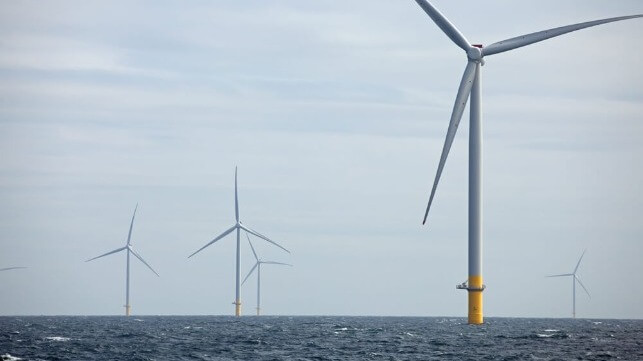Ørsted Proceeds with Construction of Hornsea 3, World’s Largest Wind Farm

Ørsted announced that it has made the final investment decision and will be proceeding with what will become the largest offshore wind farm in the world when it is completed in 2027. The decision to proceed with Hornsea 3, which is projected to cost between $10 and $11 billion, is seen as a positive signal both for the UK and the global offshore wind industry. It comes at the end of a difficult year that saw many projects abandoned and Ørsted reporting it would be taking as much as a $5 billion charge due to the changing economics of the industry.
To be located approximately 100 miles off England’s Yorkshire coast in the North Sea, the project will have a capacity of 2.9 GW providing power for up to 3.3 million homes. The company already operates two other phases of the project, Hornsea 1 which started providing power in 2019 and Hornsea 2 which was completed in 2022. When the third field comes online by late 2027, the total area will be providing in excess of 5 GW of power making it the world’s largest operating offshore wind zone. This phase will be built with Siemens Gamesa SG 14 turbines.
Permitting for the project was previously completed and in 2022 the company reached its power agreement with the UK, which uses a system known as Contract for Difference (CfD) which established a minimum price linked to inflation for the power generated by the project. In the case of Hornsea 3, the CfD was agreed in July 2022 at £37.35 per MWh at 2012 prices (approximately $47) for up to 15 years starting after the commissioning of the wind farm. The agreement provides for accumulated inflation from 2012 until the CfD starts, but in July this year Ørsted threatened to walk away from Hornsea 3 calling on the UK government to raise the price guaranty based on inflation and rising costs.
Ørsted points to a number of steps that are making it possible to proceed with the project despite the changed economics. They said that most of the capital expenditures for the project have already been contracted ahead of the recent inflationary pressures. They cite the supply chain and synergies from the already developed Hornsea projects and used flexibility built into the structure of the agreements to ensure they would achieve a targeted return on the project.
The agreements provided Ørsted the ability to defer a portion of their overall project, and they now plan to place that portion into the UK’s upcoming 2024 auction where the CfD has been reset at £73 per MWh. They expect to place a portion of the overall project at the higher price and also highlight plans for Phase 4 which would add a further capacity of up to 2.6 GW. Ørsted received the government consent order for Hornsea 4 earlier in 2023, and it is eligible for the upcoming allocation auction. When it is added to the Hornsea area the total field will provide more than 7 GW.
“Offshore wind is an extremely competitive global market, so we also welcome the attractive policy regime in the UK which has helped secure this investment,” said Mads Nipper, Group President and CEO of Ørsted in a statement announcing the decision to proceed with Hornsea 3.
Adding to the doubts that Hornsea 3 would proceed, it was one of five projects that won its contracts in 2022 along with the neighboring Norfolk Boreas project. Developer Vattenfall walked away from that project during the summer saying the surge in costs made the wind farm uneconomical.
Ørsted highlights that it currently operates a total of 12 offshore wind farms in the UK. They look to leverage the expertise, supply relationships, and infrastructure to help realize Hornsea 3 as part of their commitment to the UK market.
Officials from the UK government hailed the decision for the project to proceed. In addition to the vote of confidence for the industry, Hornsea 3 will play a critical part in the UK’s next phase of expansion of renewable energy to reach the overall goal of having 50 GW of offshore wind power generation in operation by 2030.
